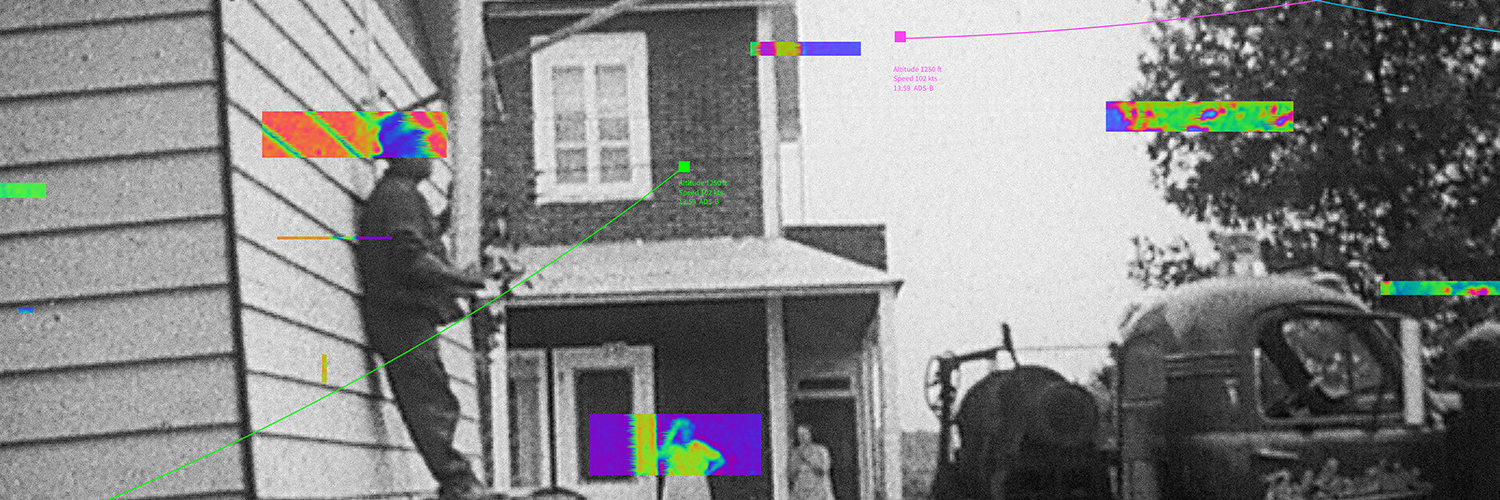Isabelle Gagné
CYMX

Summer is often synonymous with travel. To mark the occasion, TOPO proposes a little trip back in time with a new hypermedia web work by artist Isabelle Gagné, CYMX, the 4-letter acronym for the infamous Mirabel airport, north of Montreal.
In 1969, the Canadian government expropriated 97,000 acres of farmland and forcibly displaced 10,000 people from their homes to build the airport of the “future”. The vastness of the confiscated territory, made up of excellent agricultural land, reflects a disproportionate ambition and a clear disregard for the people who lived there. The steamroller of the 1960s advanced without mercy on the achievements of the past. Inaugurated in the 1970s, Mirabel Airport never met with the success it was expected to have. Too far from Montreal and difficult to access, the airport was for a long time reserved for international flights before its terminal was finally demolished in 2014.
Fifty years later, artist Isabelle Gagné, a Mirabel resident herself, proposes a (re)interpretation based on archives of what remains of the memory of these places through digital means, of what remains today of the evacuated land and of this airport now dedicated to commercial aviation.
>> Discover the web work
Credits
Poems : Marie-Ève Bouchard (MEB)
Sound design : Isabelle L Bédard
Web developing : Maxime-Alexandre Gosselin
Real-time planes API : Paul Gascou-Vaillancourt
Media credits : Video clips from NFB
Video clips from Radio-Canada
Personal photo and video archives of the artist Isabelle Gagné
Photo archives of the Bourgeois family
Photo archives of the Patrick Charbonneau family
Photo archives of the Paul-Émile Nantel and Thérèse Maisonneuve family
Documentary archives of Maxime Landry
Photo archives of various local newspapers in the Laurentians
Photo archives of the BaNQ and LAC Canada
Monologue of Yvon Deschamps, with the authorization of Mr. Yvon Deschamps
Apprivoiser les avions, courtesy of Avec pas d’casque

Isabelle Gagné
Isabelle Gagné is a multimedia artist, using mainly the photographic gesture and various digital languages. In Canada and abroad, her work has been the subject of important solo and group exhibitions, notably as part of the Mois de la Photo de Montréal (Momenta), at the Rencontres internationales de la photographie in Gaspésie, at Sporobole as part of Espace [IM] Média, at ADA-X and at the Canada Research Chair in Digital Arts and Literatures.
She has completed several artist residencies, written essays for art and photography publications including Pourquoi art mobile, a co-authored essay published in the journal Théorème at Presses Sorbonne Nouvelle (2018), and her work is featured in several private collections and recently in the file of integration of arts in architecture. Actively involved in the cultural and arts community. A pioneer of mobile art, she was also co-founder of the Mouvement d’art Mobile (MAM). As a curator, she co-curated the exhibition and catalog Mobilisations – L’art mobile au Québec which traveled the province from 2016 to 2018. Isabelle Gagné lives and works in Mirabel.
Her approach
Through her reflections on archives and the transformation of the landscape, Isabelle Gagné is interested in residual vestiges as well as their perspective in the future. Fascinated by the meeting space between “Then, Now and Tomorrow”, she seeks through her works to bring to light what remains of our presence and our passages on the different territories and what will be our subsequent reading of it.
Her artistic approach examines the notion of memory and its alteration through time, resulting in the creation of projects that look at human interaction with the virtual and real environment, as well as the common heritage of a community and the memories that remain. His practice unfolds as much in the photographic gesture through screen capture, with the hybrid connected camera or the smartphone, as through various digital languages such as augmented reality, internet BOTS, and machine learning. And it is through Glitch and other digital accidents that she invests the notion of imperfection and reminiscence specific to memories. Her experiments, based on sampling and documentation processes carried out during her real and virtual travels, cut-outs, scans, overprints and juxtapositions, give form to digital assemblies reinterpreting the observed reality.
*
Ce projet a en partie été soutenu par le laboratoire d’expérimentation en édition numérique mis sur pied par TOPO suite au programme MUTATIONS — Le livre à l’ère numérique, financé par le Fonds Stratégies numériques du Conseil des arts du Canada.